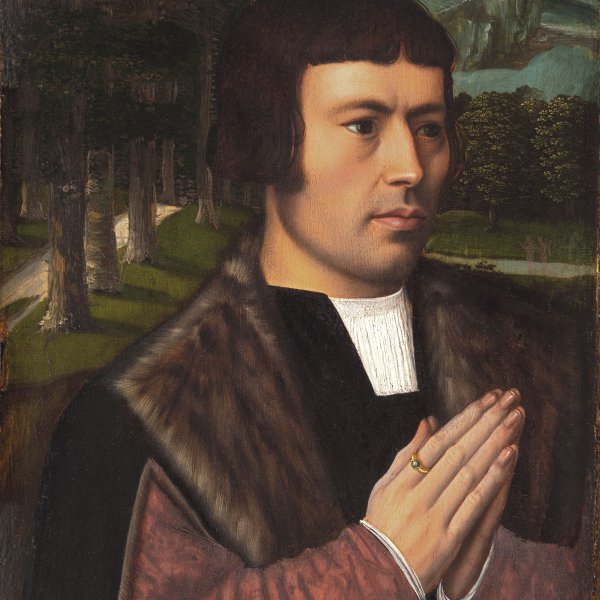Ambrosius Benson
Lombardy, ca. 1495-Bruges, 1550
A painter of religious compositions and portraits, Benson was active in the Low Countries but was of Italian origin. The first information on the artist dates from 1518 when he became a citizen of Bruges. The following year he was registered as an independent master in the painters and decorators’ guild in hat city, whose records state that he was originally from Lombardy. Benson first worked as an assistant in the workshop of Gerard David who exercised an important influence over his style and against whom he initiated a court case. Attracted to the artistic and commercial reputation of Bruges, Benson achieved fame and prestige as a painter and occupied a prominent social position, attaining official positions in both the city council and the painters’ guild. He ran an active workshop and his pupils include Joachim Spaers, Jacob Vinson and two of his sons, Jan and Willem.
Despite the biographical information that has survived there are no documents affirming the attribution of his works. Many of them were sent to Spain where Justi grouped them together in 1886 and attributed them to the Master of Segovia. Subsequently the monogram “A4B” was discovered on the Saint Anthony of Padua Altarpiece in Brussels (Musées Royaux des Beaux-Arts de Belgique). Friedländer associated that work with a Holy Family in a private collection that had the same monogram and undertook research on archival documents in Bruges in the first half of the 16th century. He concluded that the initials AB could be read as Ambrosius Benson. The fact that much of the artist’s oeuvre is to be found in Spain is due to 16th-century trading routes and in particular to the flourishing commercial relations between the two countries, given that there is no record of a trip by the artist to the Iberian Peninsula.
Despite the biographical information that has survived there are no documents affirming the attribution of his works. Many of them were sent to Spain where Justi grouped them together in 1886 and attributed them to the Master of Segovia. Subsequently the monogram “A4B” was discovered on the Saint Anthony of Padua Altarpiece in Brussels (Musées Royaux des Beaux-Arts de Belgique). Friedländer associated that work with a Holy Family in a private collection that had the same monogram and undertook research on archival documents in Bruges in the first half of the 16th century. He concluded that the initials AB could be read as Ambrosius Benson. The fact that much of the artist’s oeuvre is to be found in Spain is due to 16th-century trading routes and in particular to the flourishing commercial relations between the two countries, given that there is no record of a trip by the artist to the Iberian Peninsula.





